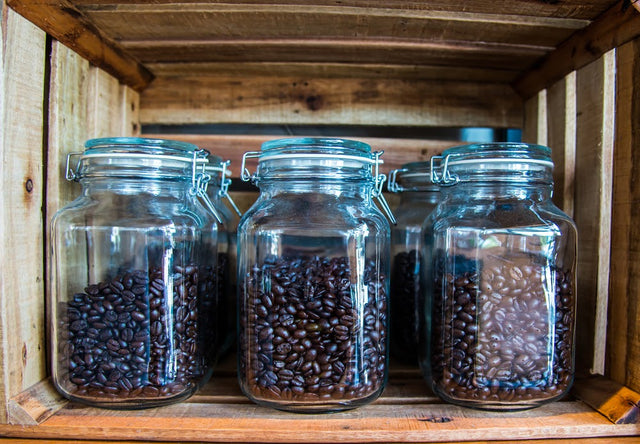With so many different types of coffees these days, it's easy to get confused between them. Today, we'll go over the most common types of coffees, so you'll never again forget the types of coffee.
ARABICA VS. ROBUSTA COFFEE BEANS
All coffee starts with beans. While there are many different types of beans, we'll look at the two most common: Arabica and Robusta.
Arabica Beans: This type of bean is known for being higher quality. The tastes that these beans have usually include flavors of fruit, chocolate, nuts, and spice. At Sumato Coffee, these beans are our go-to. This is why you'll see the flavors mentioned above in our blends.
Robusta Beans: Robusta beans usually have a more bitter taste, which is why they're often used as the base for instant coffee brands. This type has higher caffeine content than Arabica, and is more for the bold coffee drinkers that like their coffee bitter.
LIGHT ROAST VS. DARK ROAST COFFEE BEANS
The roast level of your coffee beans is another critical factor to consider when making your next cup. There are two main types of roast - light and dark - which both give very different flavors.
Light Roast Coffee Beans: These beans have been roasted for a shorter amount of time, resulting in a flavor that's typically described as "nutty" or "bright ."They're also the most acidic of all the roasts, so they're not recommended if you have stomach problems.
Dark Roast Coffee Beans: Dark roasts are made by roasting the beans for more extended periods, which gives them their characteristic "smoky" or "charred" taste. They tend to be less acidic than light roasts and are often used as the base for espresso drinks.
SINGLE ORIGIN COFFEE VS. BLENDED COFFEE
Single Origin: There's nothing quite like the taste of a single origin bean when it comes to coffee. This is coffee that has been sourced from a specific farm or region and roasted to highlight its unique flavor profile. Single origins can be enjoyed black, but they're also great for making espresso and filter coffee.
Blended Coffee: Blended coffees are made by combining different beans to create a balanced cup with flavors that complement each other. This type is popular because it offers something for everyone and can fit any taste preference. At Sumato Coffee, we have a number of blends that feature flavors such as chocolate, nuts, and berries. You can find those blends here.
CAPPUCCINO VS LATTE VS MACCHIATO
If we haven't lost you yet, we have three more types of coffee that can get confusing. However, it's easiest to remember the difference between a late, cappuccino, and macchiato with the traits below.
Cappuccino: Cappuccinos are similar to lattes, except they're topped off with more foamy milk, which overall results in less liquid overall as well as giving you something fun to look at! They tend to be sweeter than lattes because there isn't so much bitterness coming through from the espresso shot.
Latte: This coffee drink is made by mixing espresso and steamed milk before adding foam. The resulting cup has a rich, creamy taste. There is a little sweet flavor that comes from the steamed milk.
Macchiato: A macchiato is very similar to a cappuccino but served without any foam on top. It's made with one or two shots of espresso and steamed milk, so it has a more robust flavor than most other coffee drinks.
Conclusion
While many coffee drinkers know few types of coffee, it's always great to keep up on your coffee knowledge. If you've never heard and tried of some of these types of coffees before, we recommend you try them out!
If you'd like to explore Sumato Coffee's single origin and coffee blends, you can check them out here.
More stories

Tips and Tricks for Storing Coffee

